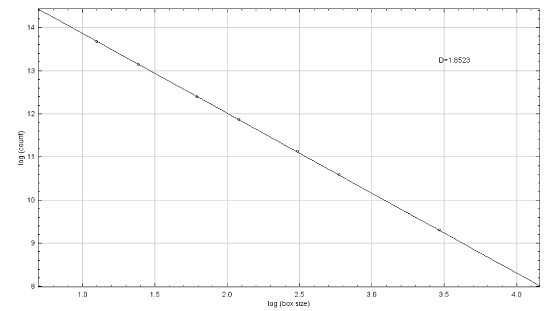Artworks Can Offer Powerful Means to Promote Health and Wellbeing in Everyone
People have used pictures, stories, and chants as healing rituals throughout history to express experiences that are too difficult to put into words. Art-making is also shown to significantly reduce symptoms of physical and emotional distress during medical treatment.
The (Benoit) Mandelbrot Set is a fractal (from Latin fract - ‘broken’) which describes repeating or self-similar patterns. The boundary of the M-Set is a fractal curve generated by ‘iteration’.
Detail of ChairArt Symbiosis, 2021, showing the painted seat.
What is Art Now?
Today’s art asks this question. Mexican sociologist Canclini (2014) suggests art puts us in dialogue with the capturing of the world at the point of its coming into being - indicating something that could happen or offering meaning or reshaping meaning, through implications; the result of having to work within the larger world context of a collection of societies without a common or dominant story line.
“Art is a place of immanence - the place where we catch sight of things
that are just at the point of occurring”
The Why of Art?
Art as a therapeutic tool could be at the forefront of its meaning today: By encouraging people to be active participants in their health and wellbeing, they can explore diverse ways to understand themselves and others.
Do Fractals Play a Role in Wellbeing?
A pattern that natural laws repeat at various scales is called a fractal. Broccoli and coastlines are two classic examples in nature. Studies show that being exposed to fractals lowers stress levels, and by age three, children comprehend and favour fractal patterns found in nature - this is likely due to the concept of growth.
You can zoom in on the fractal edges and you will find infinitely many little Mandelbrots.
Symbiosis
“An experiential free-flowing session exploring motherhood. The Buddhist principle of “dependent origination” explains how all things are mutually related: While each thing maintains its individual features, they all combine to create a harmonious whole. ”
Symbiosis by mother and son (two-and-a-half years of age at the time of painting).
Detail of the chair seat in Symbiosis.
Binarised image of seat for ‘box-counting’ method used to find the Fractal Dimension (FD) of a figure.
Applying a Voronoi filter reveals resemblance to a coastline (typically have an FD between 1 and 2).
Log-log plot. The Fractal Dimension is the slope of the line. It appears that symbiotically the two artists painted an image with a high FD = 1.8523, showing self-similarity across scales like those found in natural objects.
“Every disease is a musical problem; every cure is a musical solution””
Senses of Tumour
Fractal geometry is used in numerous fields. For example, climate change and cancer research; used in medical imaging to help identify the growth of mutated cells.
Could transforming medical imaging into gaming and interactive art be beneficial on a therapeutic level?
Senses of Tumour is a research project where the aim of the game is to destroy the tumour by creating music with the light and shadow extracted from medical imaging of the tumours themselves.
Learn more about Senses of Tumour and play one ‘iteration’ of the game here.









